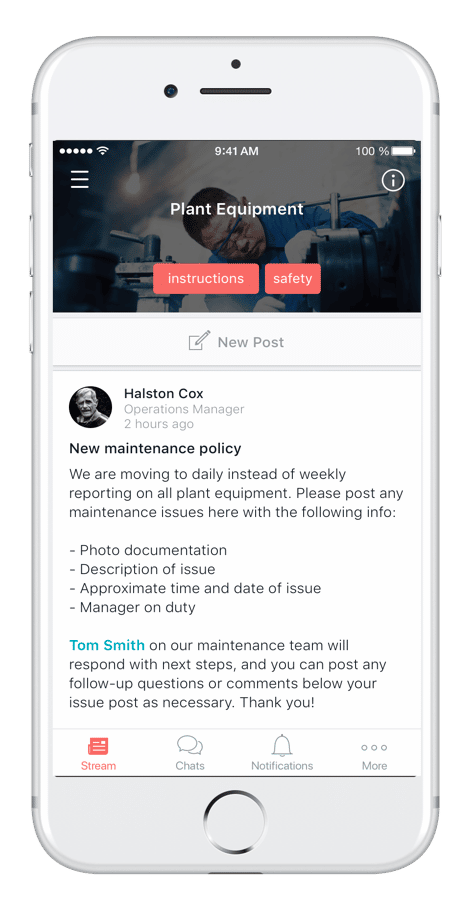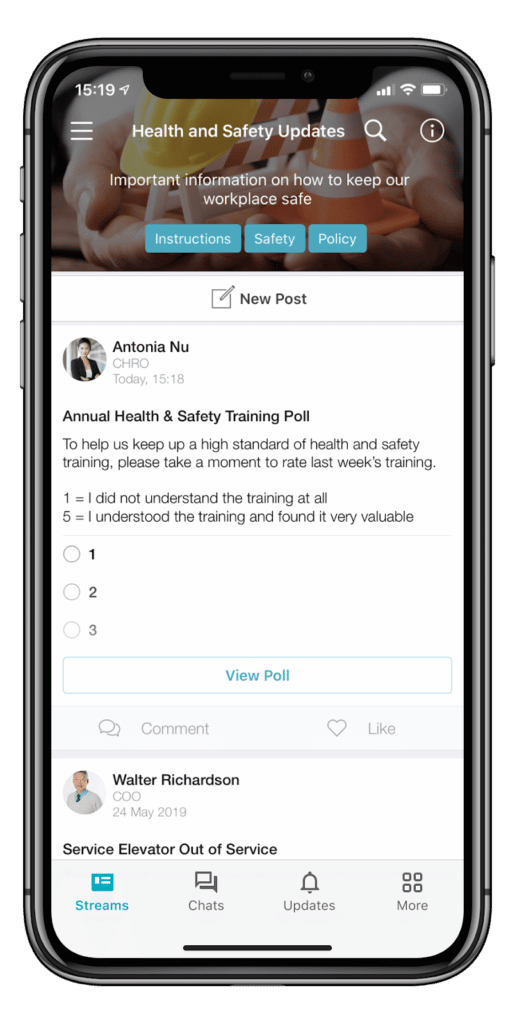There are few failures that can be as devastating to a company as a product recall. From a faulty item that doesn’t work to a defective product that poses a life-threatening risk for consumers, there are a range of reasons why a company might need to remove an item from public circulation. While businesses can position themselves to minimize such an event through quality assurance and risk management, every leader needs to have a product recall procedure in place.
Discover how digital communication can help your company survive a crisis such as a recall.
What Is a Product Recall?
A product recall is the process of contacting consumers to alert them of a defective product or unsafe food or drug item and ensuring as many of the distributed items are taken back or disposed of. Often, a recall occurs because a product is subject to failure (or a food is contaminated) which creates a public health and safety hazard.
A recall will also have a corrective action plan which can be:
- A complete removal from circulation
- Repairs made to a product
- A product is replaced by another from the manufacturer
From food processing to pharmaceuticals to automotive manufacturing to children’s toys, every industry has its own recall management system, regulations, and compliance procedures.
Build Preparedness into Operations With a Recall Management Solution
The best way for a business to handle a recall is to have a built-in system to prepare for the possibility while simultaneously employing strategies to avoid recalls altogether. Leaders should use an enterprise resource management system—a digital hub to integrate operational processes, streamline communication, and compile information to efficiently manage normal workflows and swiftly handle a recall if, and when, it happens.
Three ways to use a digital workplace to be prepared for and mitigate recall risk include:
1. Train employees to spot issues before they become recalls
A mobile-first resource management system gives employees—particularly frontline workers who have their eyes on the production process—access to internal data that can help them spot problems with equipment or production and serve as a platform for internal reporting of issues that can lead to recalls.

2. Handle recall document management
A digital hub also enables recall document management where companies can store recall information and make it easily accessible. Examples of recall document management include: Consumer Product Safety Commission’s Recall Handbook or the Organisation for Economic Cooperation and Development’s resource page.
3. Create a collaborative workforce for a smoother recall
A mobile workplace connects an entire organization from top to bottom. When workers can collaborate with one another across departments, and across levels, it creates a collaborative environment capable of exchanging information quickly and freely. For product recalls this means fast reactions and quicker problem solving, key factors in minimizing the impact to consumers and limiting disruption to operations.
Takata: A Product Recall Case Study
Takata was a Japanese manufacturer with a long history and a good reputation. Started in 1933, the textile manufacturer evolved into an automotive parts company. They were pioneers of seat belt manufacturing and crash simulation testing to ensure the safety of their products. In the 1980s they began to make airbags. By the 2000s they had a 20% market share.

In 2008, reports of airbags exploding when deployed, causing injuries and deaths, led to an initial recall of 3.6 million cars. But automobile manufacturers who installed Takata’s product in vehicles began independently contacting their customers and recalling cars. Finally, an investigation by the National Highway Traffic Safety Administration led to a complete product recall. That meant 40 million vehicles across 19 car manufacturers—the largest automotive recall in history.
As of July 2020, more than 75% of these airbags have been replaced according to the NHTSA. But it was more than Takata could handle. It had previously survived a seatbelt fiasco in 1995, but the airbag recall shuttered the company for good. The price tag when all was said and not-yet-done? $26 billion, and growing.
How Recall Management Software Supports Product Recall Communication
The success of a product recall hinges on fast product retrievals with minimal risk to customers and limited disruption to operations. That all boils down to having a solid digital communication strategy and corresponding recall management software.
A product recall communication strategy needs to emphasize the most important points:
- What is being recalled
- Why the product is being recalled
- How you will remedy the situation
A digital communications platform creates a single hub that contains product recall procedures and serves as a recall document management system. The software must facilitate the three most important factors when communicating with stakeholders about a recall:
- Immediacy
- Transparency
- Response
In Takata’s case, they broke all three cardinal recall rules. As the New York Times reported, the company discovered potential airbag defects as early as 2004 when they conducted internal testing, four years before they communicated these issues to regulatory agencies.
5 Tips for an Effective Product Recall Procedure
Every year, thousands of products are recalled worldwide. Navigating the complex compliance procedures while maintaining public trust and continuing operations can be challenging.
Because of this, companies should follow these basic steps for product recalls.
- Notify regulatory agencies. Your organization should know the proper recall protocols for your industry and products, like filing a report with the FDA or Consumer Product Safety Commission within 24 hours of discovering the potentially defective food or product.
- Isolate your product. Remove the item from the production line to avoid cross-contamination and inadvertent distribution. Determine the most cost-effective and sustainable way to dispose of defective products.
- Contact consumers and stakeholders. A product recall is a crisis, and a company should have a crisis communication plan in place as part of your standard operating procedure. This should include a strategic plan for identifying and contacting consumers and effective communication methods, like emails, social media, press releases, and retailer communication. You can also utilize strategic plan templates to make this process easier.
- Respond and remedy. Have a recall command center to handle customer phone calls and emails to remedy the situation quickly and effectively. Offer a refund, repair, or replacement, and address every customer’s concerns. Employ a digital recall management solution to handle reverse logistics, like notification management, coordinating appointment scheduling for customer returns, and tracking incoming merchandise against sold units.
- Maintain brand integrity. One misstep can yield irreversible damage to your company’s reputation. Make sure to be transparent and accountable to maintain public trust. Consider hiring a public relations firm for a large-scale recall.
3 Ways to Reduce the Impacts of Product Recalls
The impacts of a product recall can be severe. A company’s reputation, financial viability, and survival can depend on how prepared they are and how they handle a recall. One study even demonstrated that product recalls are a major disruption that reduces a company’s capability to innovate while dealing with the crisis. A recall also creates an opportunity for a competitor to jump in with a competing product when yours is taken off the market.
The best strategy? To reduce your risk of creating and distributing potentially harmful products in the first place Here are three strategies to minimize the likelihood of defective products.
- Go lean. Taking a lean operations management approach can eliminate extra steps from your processes to keep a company hyper-focused on what’s needed in their production. Take a hint from Nike who reduced shoe defects by 50% due to their commitment to continuous workflow improvement.
- Implement a solid safety culture. Build a workforce committed to quality and safety by making them core values of your company. Engaged workers take greater pride in their work and are more likely to go above and beyond, ensuring more focus on the products they’re making.

- Diversify your workforce. A recent study discovered that companies with females in leadership positions were quicker to the draw when recalling a product. Specifically, they reported issues 28 days sooner. Immediate action reduces the fracture of public trust, can save brand reputation, and, in extreme cases, save lives.
The best business strategy for a company that processes, manufactures, or distributes any kind of good is to be prepared with a recall plan. With good communication practices, an engaged workforce, and a lean operation management approach, companies can mitigate their risk of a product recall.

About the author
Beekeeper
We make frontline lives easier, work safer, and teams more connected so businesses can reach new heights. At Beekeeper, we’re dedicated to making frontline lives easier by connecting workers with the tools, support, and information they need to feel valued, do their best work, and drive the business forward.








